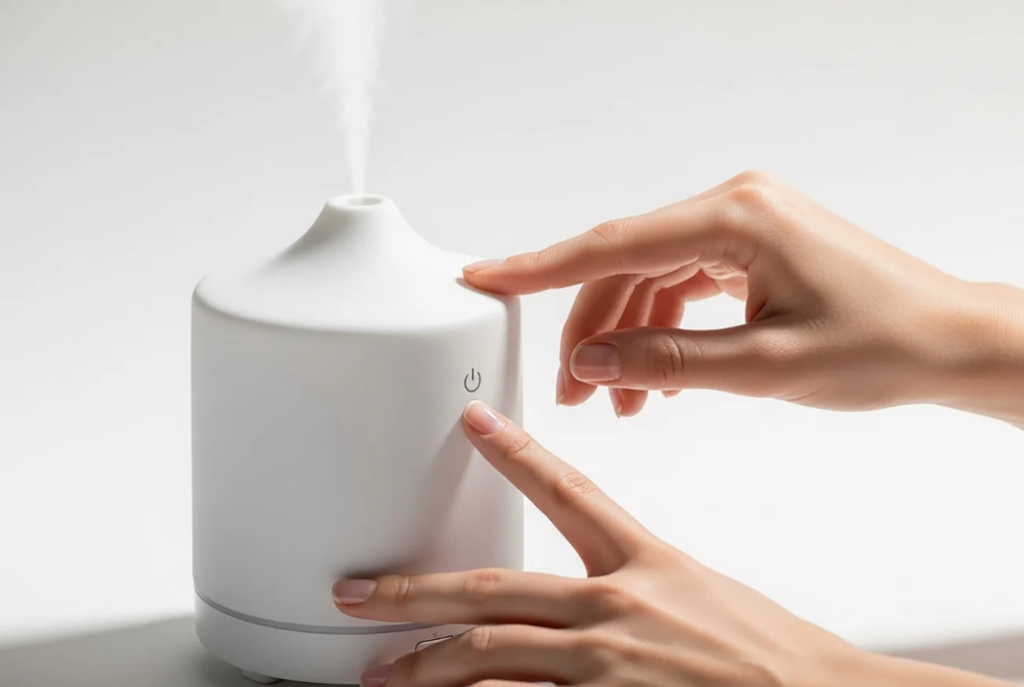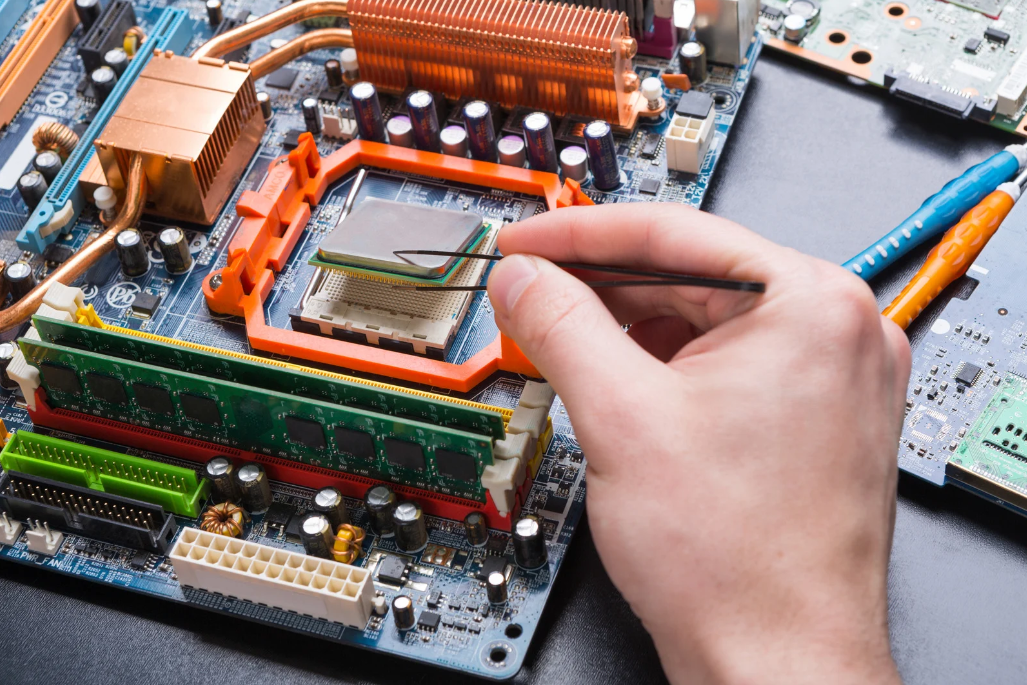Understanding Ultrasonic Waves
So, what exactly are we talking about when we say “ultrasonic waves”? Well, it’s pretty simple. They’re sound waves, but at a frequency that’s too high for humans to hear. Think above 20,000 Hz. These waves are the backbone of ultrasonic atomization. The magic happens when a transducer converts electrical energy into mechanical vibrations.
- Transducers create the initial vibrations.
- Resonators amplify and focus those vibrations.
- Frequency is key – above human hearing range.

Atomization Process
Okay, now for the cool part: how these waves actually break up liquids. When ultrasonic waves travel through a liquid, they cause rapid changes in pressure. This leads to the formation of tiny bubbles. These bubbles then expand and contract super fast because of the pressure changes. This whole process disrupts the liquid’s surface tension, and boom – it breaks apart into a fine mist. It’s like a tiny, controlled explosion that creates small droplets.
Advantages of Ultrasonic Atomization
Why bother with all this ultrasonic stuff? Because it’s got some serious advantages. One of the biggest is the control you get over droplet size. This means you can get really uniform coverage, which is great for things like drug delivery where precision is super important. Plus, it cuts down on waste because you’re not spraying extra liquid everywhere. Think of it as a more efficient and precise way to create a mist. The uniform coverage is a big deal.
Ultrasonic atomization is a game-changer because it’s precise and efficient. It minimizes waste, offers better control over droplet size, and can be used in a ton of different applications. It’s not just about making a fine mist; it’s about doing it in a smarter, more sustainable way.

Here’s a quick look at some of the benefits:
- Precise droplet size control.
- Reduced waste and overspray.
- Improved efficiency in coating processes.
Applications of Ultrasonic Atomization
Ultrasonic atomization isn’t just some cool lab trick; it’s out there in the real world, doing some pretty amazing stuff. From getting medicine where it needs to go to making your makeup look flawless, this technology is popping up everywhere. Let’s take a look at some key areas where ultrasonic atomization is making a difference.
Healthcare and Pharmaceuticals
Ultrasonic atomization is a game-changer in healthcare. It allows for really precise drug delivery, which means medications can get to exactly where they need to be in the body. Think about inhalers – ultrasonic atomizers can create a super-fine mist that gets deep into your lungs, delivering medicine right where it’s needed. This is especially useful for treating respiratory conditions. Plus, it helps make sure patients get the right dose every time, which is super important for effective treatment.
Nanotechnology and Electronics
When you’re working with stuff that’s smaller than small, you need really precise tools. That’s where ultrasonic atomization comes in for nanotechnology. It can create nanomaterials with very specific properties. By atomizing solutions with nanoparticles, you get uniform droplets that can be used in electronics, coatings, and even energy storage. The ability to control the droplet size is key to making functional nanoparticles with the characteristics you want.
Agriculture and Pesticide Application
Farmers are always looking for ways to be more efficient and environmentally friendly. Ultrasonic atomization helps with that when it comes to applying pesticides. Instead of spraying large amounts of liquid, which can lead to runoff and waste, this technology creates a fine mist that covers crops evenly. This means less pesticide is needed, which is better for the environment and can save farmers money. It’s a win-win.
Cosmetics and Personal Care Products
Ever wonder how your favorite facial mist creates such a fine, even spray? Chances are, it involves ultrasonic atomization. This technology is used to create the perfect mist for cosmetics and personal care products. The fine droplets ensure even coverage, which is what you want when you’re applying makeup or skincare products. Plus, it feels pretty luxurious, right?
Ultrasonic atomization is changing how we do things in many different fields. It’s not just about creating a fine mist; it’s about precision, efficiency, and reducing waste. As the technology continues to develop, we can expect to see even more innovative applications in the future.
Advancements in Ultrasonic Atomization: Transforming Industries
Ultrasonic atomization is really changing things up across many industries. It’s not just about making a fine mist anymore; it’s about doing it smarter, faster, and with more control. Let’s look at some key advancements.
Enhanced Control and Customization
One of the biggest improvements is the level of control we now have over droplet size and distribution. You know, it used to be pretty basic, but now manufacturers are offering atomizers with adjustable frequency and power settings. This means industries can really fine-tune the atomization process for specific jobs. Imagine being able to create the perfect mist for coating delicate electronics or delivering just the right amount of moisture to plants. It’s all about getting the specifics right.
Integration with Automation Systems
Think about automating everything. Well, ultrasonic atomization is getting in on that action too. By connecting atomizers to programmable logic controllers (PLCs) and sensors, companies can automate the whole process. This means consistent performance and fewer mistakes. Plus, you can monitor and adjust things in real-time, making the whole operation way more efficient. It’s like having a robot that’s really good at spraying stuff. This is especially useful in manufacturing, where precision and consistency are key. For example, integrating automation technologies can significantly improve production line efficiency.
Miniaturization and Portability
Remember those huge, clunky atomizers? Forget about them. Now we have compact, portable devices that can go almost anywhere. This is a game-changer for labs, clinics, and even field operations. Need to spray something in a tight space? No problem. Need to take your atomizer on the road? Easy. This portability opens up a ton of new possibilities.
The move toward smaller, more portable units is making ultrasonic atomization accessible to a wider range of users. This trend is particularly beneficial for applications requiring on-site or remote operation, such as environmental monitoring or agricultural spraying.
The Role of Ultrasonic Atomization in Industrial Applications
Ultrasonic atomization has really taken off in many industrial settings. It’s not just a lab thing anymore; it’s actually making a difference in how stuff is made and processed. Let’s look at some specific areas where it’s having an impact.
Manufacturing and Surface Treatment
In manufacturing, getting a consistent coating or surface finish is super important. Ultrasonic atomization helps with that. It provides a really even spray, which means fewer defects and better quality products. Think about it: if you’re coating something, you want it to be uniform, right? This tech makes that easier to achieve. It’s used in industries from automotive to electronics, wherever a precise and consistent surface is needed.
Production of Advanced Materials
When we’re talking about making advanced materials, like nanomaterials, the size of the droplets matters a lot. Ultrasonic atomization gives you really good control over that. You can create droplets of a specific size, which then turn into particles with the properties you want. This is useful in making things like piezo atomizers for electronics or special coatings with unique characteristics. It’s all about precision at a tiny scale.
Energy Efficiency and Sustainability
One of the cool things about ultrasonic atomization is that it can be more energy-efficient than other methods. It uses less energy to create the spray, which is good for the environment and can save companies money. Plus, because it’s so precise, there’s less waste. You’re not spraying extra material that just ends up going nowhere. This makes it a more sustainable option for many industrial applications.
Ultrasonic atomization is becoming more popular because it offers a way to improve processes while also being more environmentally friendly. Companies are always looking for ways to reduce costs and waste, and this technology helps them do that. It’s a win-win situation: better products and a smaller environmental footprint.
Ultrasonic Atomization: The Future of Drug Delivery Systems
Ultrasonic atomization is really changing how we think about getting medicine into people’s bodies. It’s not just about making a mist; it’s about precision and control, which can lead to better results for patients. The ability to create really fine, uniform droplets opens up some exciting possibilities for targeted drug delivery and improving how well medications work.

Targeted Drug Delivery
The big advantage here is getting the drug exactly where it needs to go. Instead of flooding the whole system, ultrasonic atomization can help deliver medication directly to the affected area. This could mean fewer side effects and a more effective treatment. Think about lung diseases, for example. Inhaling a mist of medication directly into the lungs could be way more effective than taking a pill that has to travel through your whole body first.
Enhanced Medication Effectiveness
Ultrasonic atomization can also make drugs work better. By creating tiny droplets, the medication can be absorbed more easily and quickly. This is especially important for drugs that are hard to absorb or that need to act fast. Plus, the uniform droplet size ensures that each dose is consistent, which is crucial for effective treatment.
Improved Patient Outcomes
Ultimately, all these advancements should lead to better results for patients. With more targeted and effective drug delivery, we could see fewer side effects, shorter treatment times, and improved quality of life. It’s not just about making people feel better; it’s about changing how we treat diseases and improving healthcare overall.
The potential of ultrasonic atomization in drug delivery is huge. It’s not just a new way to deliver medicine; it’s a chance to rethink how we approach treatment and improve patient care. As the technology continues to develop, we can expect to see even more innovative applications that will transform the future of medicine.
Understanding the Environmental Impacts of Ultrasonic Atomization
As with any technology, it’s important to think about how ultrasonic atomization affects the environment. While it has some good points, like cutting down on waste and making sure the right amount of stuff is used, we need to be careful about how we use it and what happens to the stuff that’s atomized.
Responsible Use and Disposal
It’s really important to use ultrasonic atomization responsibly. This means:
- Following the rules and guidelines for using the equipment.
- Making sure the people using it are trained well.
- Regularly checking the equipment to make sure it’s working right.
Using ultrasonic atomization the right way can help reduce its impact on the environment. By being careful and following the rules, we can make sure this technology is used in a way that’s good for everyone.
Waste Management Practices
What happens to the stuff that’s left over after atomization? That’s a big question. We need to have good ways to deal with waste, like:
- Collecting any leftover materials carefully.
- Recycling materials whenever possible.
- Disposing of waste in a way that doesn’t hurt the environment.
Long-Term Environmental Assessment
We also need to study how ultrasonic atomization affects the environment over a long time. This means:
- Monitoring the air and water quality around where it’s used.
- Studying how it affects plants and animals.
- Looking for any unexpected problems that might show up later.
By doing these things, we can make sure that ultrasonic atomization is used in a way that’s safe for the environment and for people’s health.
Want to know more about how ultrasonic atomization affects our planet? We break down the good and the bad, helping you understand its real-world impact. Discover how this cool tech works and what it means for the environment. Check out our website for more details!
Conclusion
So, ultrasonic atomization is a pretty big deal. It’s changed a lot of industries because it lets us control tiny droplets really well. From hospitals to farms to makeup companies, this technology is everywhere. New developments keep making it better, giving us more control and even allowing for automation. As businesses look for ways to be more efficient and kinder to the planet, ultrasonic atomization looks like it has a bright future, especially for things like getting medicines where they need to go. But, we also need to be smart about how we use it, making sure we don’t harm the environment. With all its uses and constant improvements, ultrasonic atomization is definitely going to keep shaping many different industries.
Frequently Asked Questions
What exactly is ultrasonic atomization?
Ultrasonic atomization uses sound waves, too high for humans to hear, to break liquids into tiny, fine droplets. Think of it like a super-fast, invisible vibration that turns liquid into a mist.
Where is this technology used?
It’s used in many places! You’ll find it in medicine for delivering drugs, in making tiny parts for electronics, in farming to spray pesticides, and even in beauty products like face mists.
What are the main benefits of using ultrasonic atomization?
This method is great because it makes very small, even droplets. This means less waste, better coverage, and often, you need less of the liquid you’re spraying. It’s also very precise.
Has this technology gotten better recently?
Yes, a lot! Newer machines can be controlled more precisely, they can work with robots, and they’re becoming much smaller and easier to carry around. This makes them useful in more places.
How does this help with giving people medicine?
It’s a big deal for medicine. It helps deliver medicines right where they need to go in the body, making them work better and often reducing bad side effects for patients.
Is ultrasonic atomization good for the environment?
While it helps reduce waste, we still need to be careful about what liquids are used and how we get rid of them. Companies should follow good practices to protect the environment and people’s health.



